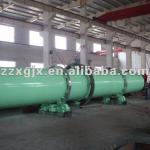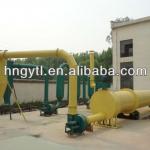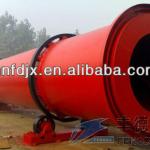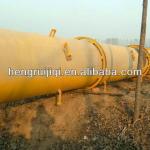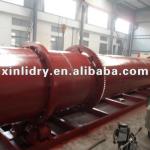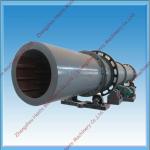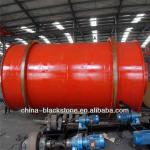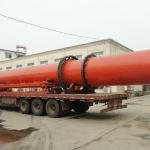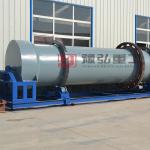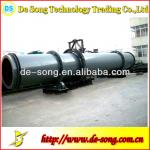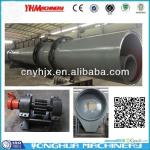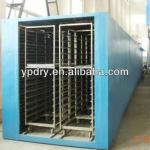double cone rotary calcinator
| Type:Rotary Drying Equipment | Place of Origin:Jiangsu China (Mainland) | Brand Name:TIANHUA | Model Number:all kinds |
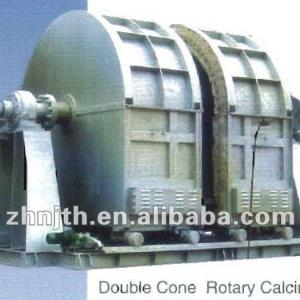
1. Introduction of Equipment
Calcinator is a sort of high-temperature processing equipment that can treat powder and filter cake-like products, which is also called baking furnace. It can be divided into coal-fired calcinator, gas-fired calcinator, oil-fired calcinator and electrothermal calcinator by energy sources used. By heating methods it can be divided into direct-heated calcinator and indirect-heated calcinator. By operating methods it can be divided into continuous and batch type. Calcinator mainly applies to chemical process of activation, crystal change, oxidation, pyrolysis, reduction, halogenation, sulfating, etc. It’s widely used to process some special materials in petrochemical, inorganic chemical, metallurgy and other industry.
For indirect-heated continuous calcinator, the product is fed through furnace head into furnace shell, there is electronic heating element or combust device in heating furnace, the temperature of furnace hearth is controlled via electronic heating element or combustion device, which ensures the material to be baked under specified temperature. Furnace shell is horizontal or inclined. The material is baked and moves forward while the furnace rotates, the baked product is discharge into next process from outlet. Residence time can be controlled by adjusting rotating speed or shell slope.
Electrothermal calcinator mainly consists of shell, electronic heating system, hearth and control system. Besides rotary type, it can also be vacuum type, pressurized type, double cone type and customized according to material requirements.
Gas-fired calcinator mainly consists of shell, burner, hearth, ventilation device and control system. Nature gas, water coal gas, liquid petroleum gas and other gas can be used as fuel. Its advantage is better combustion and high thermal efficiency. Meanwhile, burn process can be easily controlled and cause less contamination compared with solid and liquid fuels.
2. Feature of Electrothermal calcinator
Well sealed, high-automatized
Automatic temperature control for each segments
Safety and reliable heating system
Insulation furnace temperature below 50°C, less heat loss
Compact construction, small volume, light weigh
High efficiency, save energy, no contamination
Simple operation, convenient maintenance, well operating environment
Simple auxiliary equipment, easy for maintenance
Operating temperature up to 400°C~1000°C
3. Feature of Combustion gas calcinator
Well sealed, less material and heat waste
Abundant gas combusted, high thermal efficiency
Automated temperature control, segmental control
The protection system of suddenly loss electricity
Well insulation, less heating waste
Safety, reliable combustion control system
Compact construction, small volume, light weigh, easy install
Less contamination compare with using solid and liquid material
Operate temperature up to 400°C~900°C
4. Specifications and Types
| specification (mm) (nominal diameter×shell length) | rate r/min | type |
| DN150~300×5000 | 0.5-5.0 | Electrothermal rotary cylinder |
| DN400~500×6000 | 0.5-4.5 | Electrothermal rotary cylinder |
| DN600~800×10000 | 0.5-4.0 | Electrothermal/ combustion gas rotary cylinder |
| DN900~1000×16000 | 0.5-2.5 | Electrothermal/ combustion gas rotary cylinder |
| DN1100~1300×25000 | 0.5-2.0 | Electrothermal/ combustion gas rotary cylinder |
| DN1400~1500×25000 | 0.5-2.0 | Electrothermal/ combustion gas rotary cylinder |
| DN1600~1800×25000 | 0.5-2.0 | Electrothermal/ combustion gas rotary cylinder |
| DN2000~2300×24000 | 0.5-2.0 | Electrothermal/ combustion gas rotary cylinder |
| DN1500~2000,1m3~3m3 | 0.5-5.0 | Double cone rotary |
Note Due to different material characters, we will design in accordance with process requirement. Above data only for reference.
5. Applicability
Calcinator is widely used for process some special products (such as special catalyst, special molecular sieve, kaolin, mineral powder, special adsorbent, inorganic salt etc.) in petrochemical, inorganic chemical, metallurgy, etc. Mainly application: oil refining catalyst, zeolite molecular sieve, active carbon adsorbent, magnetic materials, sulfidization mineral, manganese, sodium carbonate, aluminum hydroxide, refractory materials, silicate, ceramics, etc.

| Packaging Detail:standar export container |
| Delivery Detail:according to the order |



